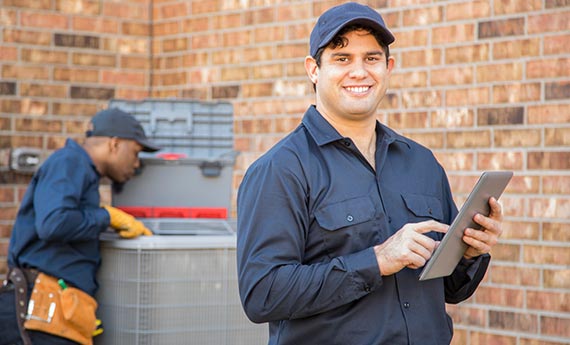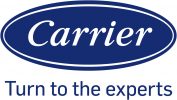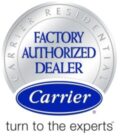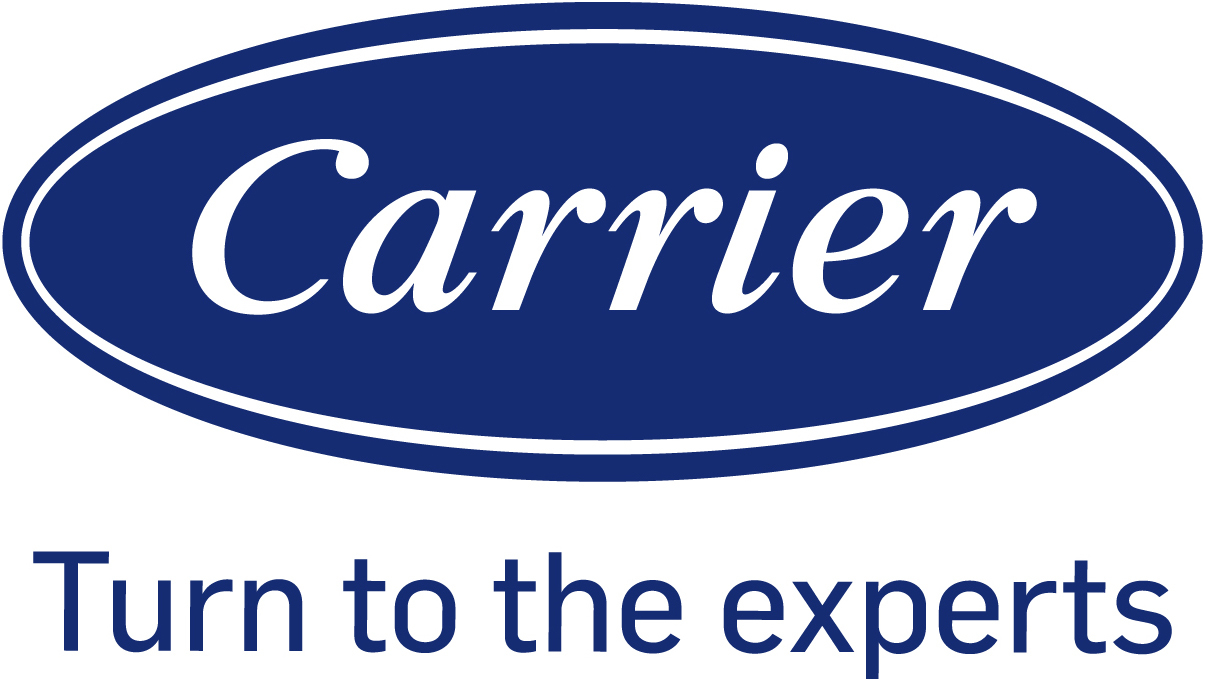According to the United States Environmental Protection Agency (EPA), indoor air can be up to five times more polluted than the air outdoors. Factors that affect this include the way buildings are constructed and the numerous airborne contaminants that find their way indoors every day. Given that we’re still in the middle of a pandemic and most of us are spending a lot of time indoors, improving indoor air quality is on the top of everyone’s list.

The air we breathe inside our homes is often polluted with allergens, dust, mold, pet dander and tobacco smoke, but that doesn’t mean our health must be jeopardized. While an air purifier isn’t the cure-all for the problem of poor indoor air quality, this simple solution can help you and your family breathe a little easier.
With so many air purifiers available on the market today, choosing the one that’s right for your home can be difficult. To help you make the best selection, heating and air conditioning installation contractor Broom Heating & Air Conditioning came up with this simple buying guide.
The Size of Your Indoor Space
Many people think that an air purifier is a one-size-fits-all kind of device. However, it must be properly sized based on the size of the space needing to be cleaned. If the device is too small for a large room, it won’t filter air sufficiently; if it’s too large for a small room, however, it will filter the air quickly but will also waste a lot of electricity.
To determine the best fit, you have to consider the air purifier’s specifications, particularly the ACH and CADR.
- ACH – This stands for “air changes per hour.” Expressed in 4x, 5x, 6x and so on, this is a metric that tells you how many times the device can replace dirty air within a room with clean, fresh air every hour. The higher the number, the more efficient the device is at purifying indoor air.
- CADR – This stands for “clean air delivery rate.” It was developed by the Association of Home Appliances Manufacturers (AHAM) to help consumers understand the effectiveness of an air purifier in filtering various particles in a particular room size. Generally, the higher the number, the more air particles it can remove, and the larger the room it can reasonably be expected to clean. CADR is expressed in a single number or a set of three numbers that each correspond to the type of indoor pollutant an air purifier can remove. For example, a CADR of 200 for pollen means the device can get rid of a concentrated amount of the airborne particle at the equivalent of adding 200 cubic feet of fresh air every minute. The EPA also has guidelines for the minimum CADR ratings by room size. For instance, an air purifier with a minimum CADR of 60 cubic feet per minute fits in an indoor space that measures 100 square feet.
Air Filtration Technology
Air purifiers differ in terms of the type of air filtration used, which include the following:
- High-efficiency Particulate Air (HEPA) filtration – This is considered the gold standard for air purification. HEPA air purifiers have a highly dense paper filter that traps airborne particles efficiently without releasing them back into your indoor air. An HVAC contractor usually recommends air purifiers with the “True HEPA Filter” label, which means they’re certified to remove 99% of all microscopic particles as small as 0.3 microns in size.
- Ionic filtration – This type emits a cloud of charged ions into the air, targeting airborne contaminants and inactivating them until they fall onto the floor and other surfaces. Some devices have an electrostatic collection plate that attracts fallen particles and removes them from the room.
- Carbon filtration – This uses a special form of activated carbon consisting of millions of absorbent pores, creating a large surface area to trap odors, fumes and gases emitted by certain airborne particles. This makes your indoor air smell fresh and clean.
- Ultraviolet (UV) light – This filtration method emits invisible UV-C light that attacks bacteria, viruses and other germs by destroying their molecular structure, resulting in a sterile environment free of the particles that make you sick. This is usually an additional feature in HEPA and ionic air cleaners.
Operational Capabilities
Air purifiers also differ in terms of how they operate. On the one hand, you have classic or traditional versions. These are the ones that you set and forget, relying on the specifications indicated on the devices and the amount of dirt the filters have trapped to determine if they’re really working. While some are equipped with digital controls and air quality sensors, there’s no way of knowing the type of contaminants that these products remove.
On the other hand, you have the air purifiers with smart capabilities. These come with a mobile app that you download on your handheld device to give you real-time data about your device’s air cleaning capabilities. With just a few taps and swipes, you can check the type and amount of pollutants that are being removed from a room, as well as track the level of indoor air quality.
Noise Levels
Air purifiers, particularly those with HEPA and carbon filters, are equipped with internal fans that pull air through a series of filters. On the low setting, these fans are practically silent. Turn the devices up a notch, and they’ll emit a humming sound. Choose one that’s quiet even when the fan is set to the highest speed setting. This is especially important if you’re using it in a bedroom or nursery. Be sure to check the device’s specifications to learn the noise level range measured in decibels.
Energy Consumption
Air purifiers are no different from HVAC systems and other home appliances in terms of energy consumption. Since they need to run for long hours to ensure clean air and good indoor air quality, you have to consider the amount of energy a certain device uses before you purchase it. While you can check the wattage in the specs, the best way to determine an air purifier’s energy efficiency is by perusing its ENERGY STAR® label. Having such a label is an indication that it uses the least possible amount of energy while operating at a lower cost.
As a Carrier® Factory-Authorized Dealer, Broom Heating & Air Conditioning offers our customers proven, cost-effective options to optimize your indoor environment and boost your indoor air quality. We also specialize in heating and air conditioning repair, replacement, installation and maintenance. Learn more about our products by calling (803) 754-5466 or filling out our contact form.

 Planned maintenance is key to making sure your heating and cooling system is in top shape at all times. A lot of property owners see it as merely added expense but it’s not! Think of a planned maintenance agreement as an investment into your investment. Your HVAC system plays a role in keeping your home or business comfortable and energy-efficient, after all, so it definitely pays to have one in place.
Planned maintenance is key to making sure your heating and cooling system is in top shape at all times. A lot of property owners see it as merely added expense but it’s not! Think of a planned maintenance agreement as an investment into your investment. Your HVAC system plays a role in keeping your home or business comfortable and energy-efficient, after all, so it definitely pays to have one in place.








